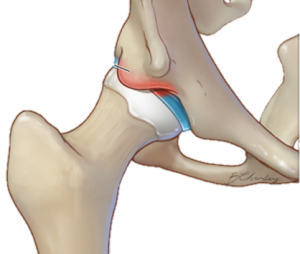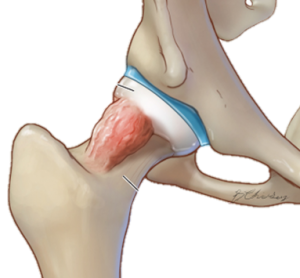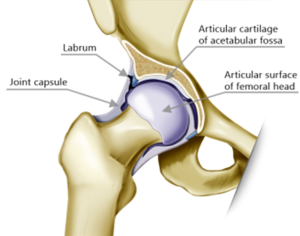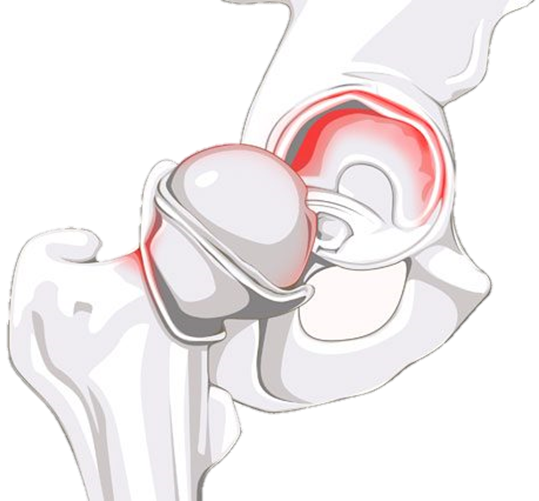A labral tear of the hip joint is a tear to the cartilage lining of the hip joint, called the acetabulum which acts as cushioning for the joint. A tear can cause hip and groin pain and make the joint stiff. This hip injury can be caused by a direct impact or come on gradually through degeneration.
Symptoms
- Pain in the hip or groin.
- A clicking or locking of the joint can occur.
- Stiffness and restricted mobility in the hip joint is likely.
- Symptoms may come on suddenly following an impact or trauma but can also develop gradually if the joint progressively degenerates.
Causes
Labral tears can be acute, caused by trauma such as traffic accidents, collisions, and bad falls. They can also be of gradual onset through repetitive strain on the hip for example in golfers. Two types of impingement can occur either in isolation or some athletes may have both types at the same time
Pincer Impingement

Pincer impingement occurs when there is a bony growth or spur at the acetabulum which impinges on the femur.
Cam Impingement

Cam impingement occurs when the neck of the femur or thigh bone becomes enlarged or thickened due to additional bone growth. This then impinges on the hip joint and over time causes injury to the labrum.
Anatomy
The socket of the hip joint that the thigh bone sits in is called the acetabulum. This is lined by a ring of cartilage called the labrum. The labrum supplies cushioning and support for the hip joint. Tears can occur in the labrum, also known as a hip labral tear or acetabular labral tear. Tears to the labrum are being diagnosed more often due to the improvements and wider availability of MRI scans which is the only way to diagnose a labral tear 100%

Treatment
- Treatment usually requires surgery known as debridement via an arthroscopy (key-hole surgery).
- The torn part of the labrum is removed. Generally results from this procedure are very good.
- A rehabilitation program should be followed after surgery to restore full strength and movement to the hip joint and prevent further injuries or instability.
- If left the injury could degenerate into a worn hip joint with eroding of the hard cartilage on the ends of the bone and development of Osteoarthritis in the hip.
Contact Me
Let's chat!
Need more information? Send me an email or drop me a line. I don’t bite!
- Charlotte@rehabontheroad.co.uk
- 07971448719

